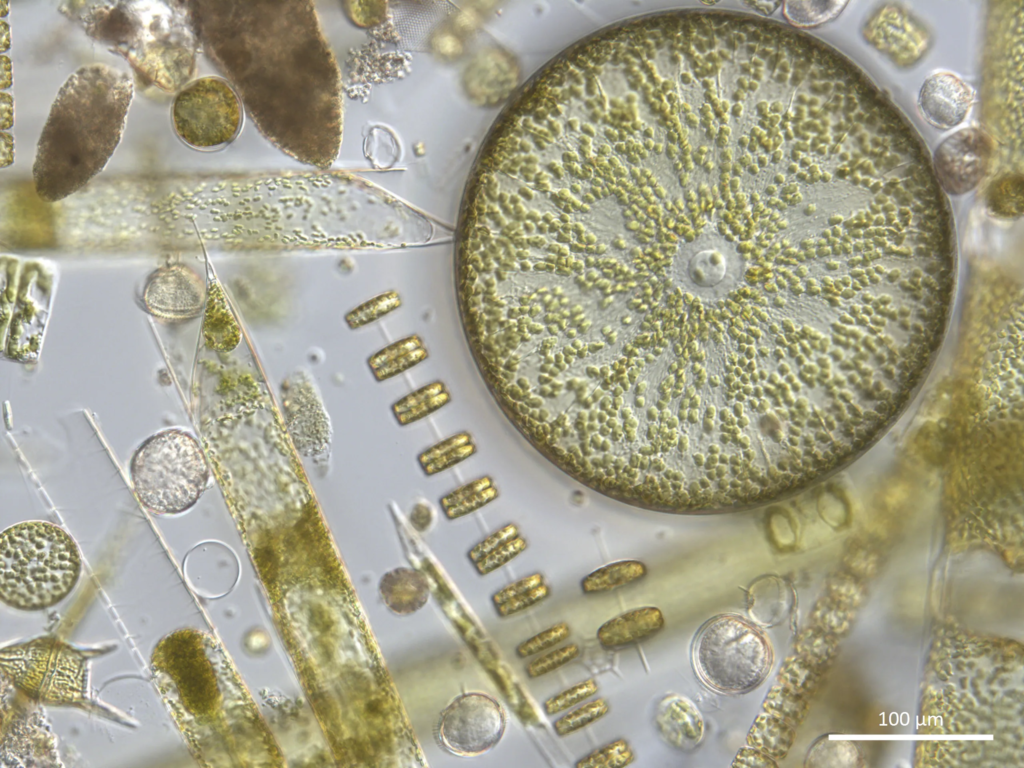Diatoms are single celled algae and are one of the largest groups of organisms on earth. They can form vast blooms in the ocean and support life of other marine organisms at the base of aquatic food chains.

Diatoms do not live in isolation, but with a plethora of other marine microbes such as bacteria. Scientists have found that some bacteria can be harmful to diatoms, preventing growth or even killing them. Despite the potential detrimental impacts of such bacteria on diatom population health, knowledge of how prevalent these diatom ‘antagonists’ are in nature is lacking.
In this latest study, researchers have used a new sampling pipeline to monitor the diversity and seasonal dynamics of diatom antagonists by sampling water in the Western English Channel, where diatoms frequently bloom.
Unexpectedly, increases of harmful bacteria did not occur during spring diatom blooms, but coincided with a winter bloom of the giant diatom Coscinodiscus, suggesting that these bacteria likely impact specific diatom host populations.
Overall, the data suggests that diatom-harming bacteria are much more common than previously recognised. Results showed that antagonistic bacteria isolated from the Western English Channel show broad distributions in marine ecosystems across the world.
Dr Laura Branscombe, a PhD student at the Marine Biological Association (MBA) and first author of the study successfully combined laboratory and field study to gain crucial new insights of these hostile diatom-bacterial interactions.
She said: “Despite the important impacts of diatoms and diatom blooms in the ocean, we still don’t have a firm consensus on the environmental factors controlling bloom formation and demise.
This work uncovers important evidence that antagonistic bacteria are a key environmental stressor confronting diatoms in marine ecosystems and may play crucial roles in driving the demise of diatom blooms.”
Read the full paper: https://nph.onlinelibrary.wiley.com/doi/10.1111/nph.19441